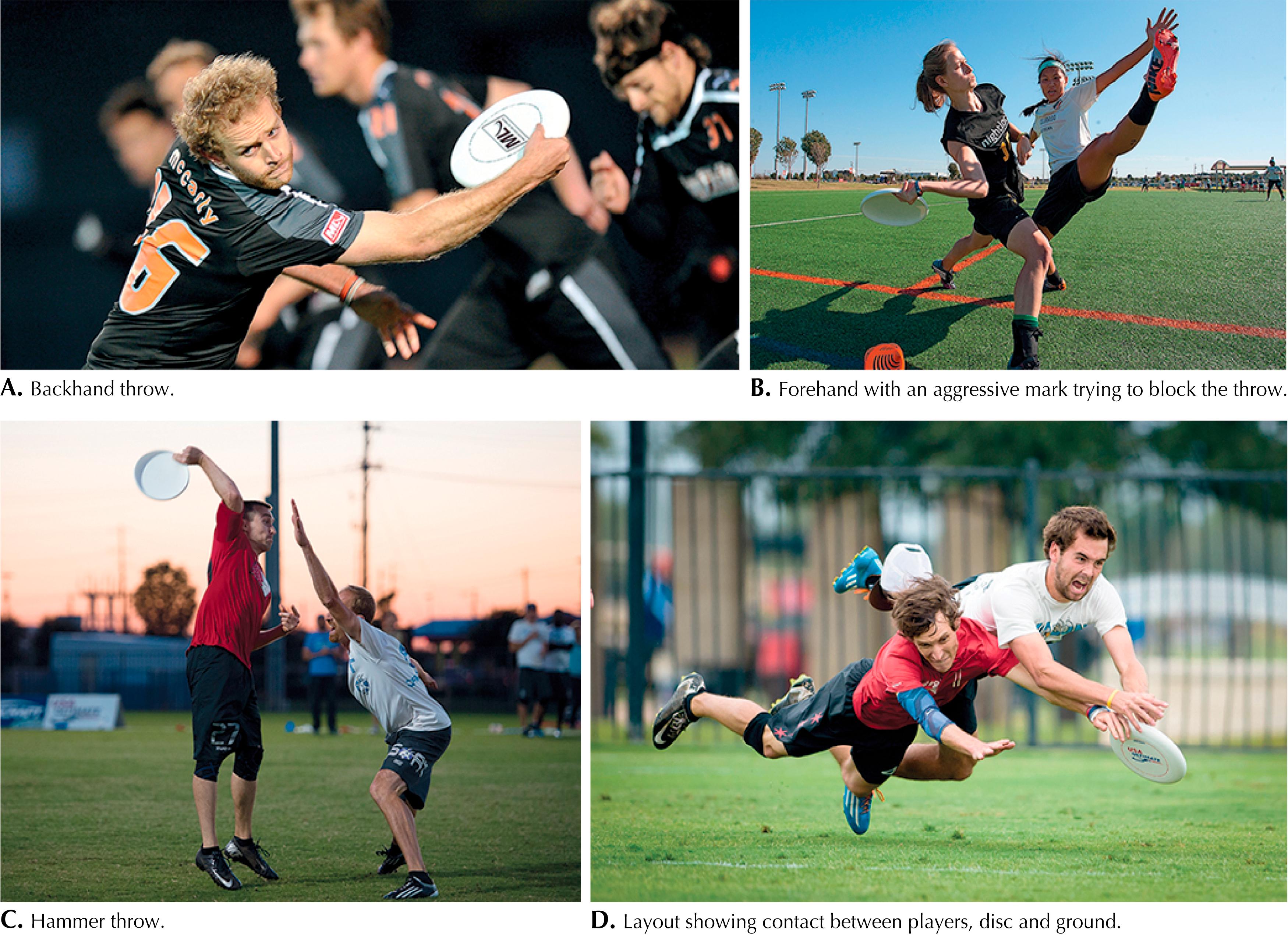Physical Address
304 North Cardinal St.
Dorchester Center, MA 02124
A group of students at Columbia High School in Maplewood, New Jersey, first played Ultimate Frisbee in 1968.
Commonly referred to as “Ultimate.”
Distinct from disc golf.
Played from the recreational to the international level.
Most commonly played outdoors on grass or turf fields, but variations include indoor and beach Ultimate.
In 2017, approximately 3.13 million participants in the United States, which includes all ages and genders.
Few studies in the literature regarding Ultimate.
Noncontact sport with a high injury rate.
One study reported out of 32 club college teams, Ultimate was second only to rugby for the number of injuries. Ultimate accounted for 31% of the injuries, whereas rugby accounted for 33.8% of the injuries.
Another study noted that competitive collegiate club sports, which include Ultimate, have an injury rate equal to nonclub collegiate sports.
12.64 injuries per 1100 athlete exposures.
Players are 43% more likely to be injured in a game than in practice.
Multiple studies show that the most common injuries are sprains and strains.
Lower extremity injuries account for up to 67% of injuries, with knee and ankle injuries being the most common.
Men are more likely to be injured during a layout than women.
Men are three times more likely to suffer a shoulder separation or dislocation.
Women are seven times more likely to suffer an anterior cruciate ligament (ACL) injury than men.
Overall women may be at more risk for injury than men.
Concussions are likely prevalent, with one study showing 26% of competitive Ultimate athletes (male and female) sustaining one concussion and 43% sustaining multiple concussions during their playing career. More studies are needed to determine true incidence because of lack of standardized reporting.
Backhand: Most common and basic throw. Throwing arm starts in an adducted position and brought across the body as the shoulder goes into external rotation. Power and distance are achieved through proper biomechanics transferring power through the hips and shoulder, ending with forcefully snapping the wrist upon release of the disc. Similar to backhand in tennis ( Fig. 71.1A ).

Forehand: Second most common throw. Also referred to as a “flick.” Shoulder starts in external rotation, elbow flexed, and wrist supinated. Most of the power and distance are achieved with the wrist snapping upon release (see Fig. 71.1B ).
Hammer: Overhead throw with shoulder adducted and elbow flexed. Disc is released at an oblique angle relative to the ground. Most of the power and distance are achieved with the wrist snapping upon release (see Fig. 71.1C ).
Layout: Dive at the end of a run where a player leaves their feet, going horizontal to the ground in an attempt to catch or defend the disc. A significant number of injuries occur during a layout because of contact with another player and the ground (see Fig. 71.1D ).
Mark: Person guarding the player with the disc. Players have 10 seconds to throw the disc (see Fig. 71.1B ).
Pull: Starts every point. Defensive team throws the disc to the offensive team. Both teams start on their respective goal lines and cannot pass the goal line until the disc is released. Similar to a kickoff in football.
The governing body in the United States is a nonprofit organization called USA Ultimate.
In 2014, USA Ultimate became a member of the US Olympic Committee (USOC) as a recognized sport organization.
College Ultimate started in 1984 as a club sport.
Over 18,000 student athletes from over 800+ colleges compete, which accounts for USA Ultimate’s largest member segment. These student athletes make up multiple conferences within multiple regions nationwide.
Student athletes have 5 years of eligibility.
Men’s and women’s divisions.
Regular season is from January to March (see “Specific Training, Physiology Issues, and Unique Environmental Issues” for competition format).
Postseason is from April to May and includes conference championships, regional championships, and a national championship.
Starting in 2010, a championship tournament was specifically created for Division III colleges.
Starting in 2017, the college championships were live on ESPNU for the first time. Before that the college championships have been streamed on ESPN3 since 2015.
Become a Clinical Tree membership for Full access and enjoy Unlimited articles
If you are a member. Log in here